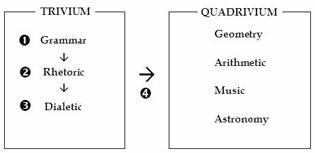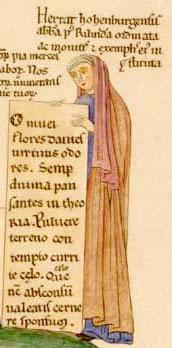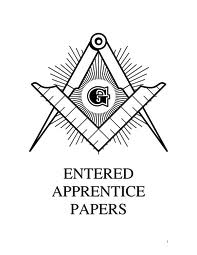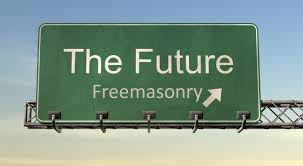The Seven Liberal Arts Explained
A BRIEF INVESTIGATION OF THE SEVEN LIBERAL ARTS AND SCIENCES: Origins, Masonic Relevance and Applicability in Modern Life
The education and personal thrust to improve oneself in the Craft teachings never end.
Masonic teaching enthusiastically encourages its students to contemplate and learn from the seven Liberal Arts and Sciences1 that originated in. At some point in our Masonic careers most of us will ask ourselves why is it that we find these seven specific areas to be more relevant than other disciplines, say geography or chemistry, or other forms of artistic expression, such as dance instead of music? Would the study of music or astronomy make me a better Mason? How? Why seven arts, and not six or eight or twelve?
Why do these arts always seem to be presented in a specific order, and are they interdependent upon one another? Are they equally important?
Where do they come from?
Without the answers to these questions it is impossible to fully appreciate the importance and beauty of the Liberal Arts and Sciences in a Masonic context. To expand our Masonic knowledge as we are instructed and truly value these arts, we must make an effort to seek answers. And such is the significance of the Liberal Arts and Sciences for the progress of human knowledge over the last 20+ centuries that, once found, these answers could become a superior foundation for our understanding of the Craft and our own place in history.
This paper is the result of a preliminary investigation about the Liberal Arts and Sciences conducted by the Education Committee of Masonic lodge Doric 316 in Ontario, Canada. Although the answers communicated here are not all-encompassing and do not conclude this study, they should serve to unlock the first few doors for those who wish to further explore this path on their own.
Many years after, the good clerk Euclid Taught the craft of geometry full wonder wide, So he did that other time also, Of divers crafts many more. Through high grace of Christ in heaven, He commenced in the sciences seven; Grammar is the first science I know, Dialect the second, so I have bliss, Rhetoric the third without doubt, Music the fourth, as I you say, Astronomy is the fifth, by my snout, Arithmetic the sixth, without doubt, Geometry the seventh maketh an end, For he is both meek and courteous, Grammar forsooth is the root, Whoever will learn on the book; But art passeth in his degree, As the fruit doth the root of the tree;- Regius Manuscript poem, A.D. 1390
(British Museum / London)
What are the Seven Liberal Arts and Sciences?
The starting point in our search will be to review what these seven arts are and what they teach. The seven arts are composed of two families containing three and, respectively, four arts – this “3+4” structure is critical to understand how these arts complement each other. We will establish the reasons for this division shortly, but first let‟s review the seven classical arts and sciences.
The first family is composed of:
Grammar – defines the rules used to construct phrases, sentences, words, and connects these elements to communicate ideas in a given language. An understanding of this first art is necessary for all others to be learned.
Rhetoric – is the art of using language as a means to persuade. Once a student learns how to read and write properly, s/he is now prepared to manipulate words and sentences to express complex ideas. Mastering Rhetoric is an intermediate step before delving into the more complex domain of Logic.
Dialectic/Logic - is the reasoning which seeks to confront and contrast ideas, identify which is correct and which is not, remove ambiguity, and measure, compare, analyze, prove, and demonstrate facts with clarity. The word derives from the Greek logiké, feminine of logikos, “possessed of reason, intellectual, dialectical, argumentative”, and from logos, “word, thought, idea, argument, account, reason, or principle”. Grammar is the mechanics of a language; rhetoric is the use of language to instruct and persuade; logic is the “mechanics” of thinking clearly, of comparison and analysis. Sister Miriam Joseph, PhD (1898-1982), a member of the Sisters of the Holy Cross and an author specialized in medieval education, described them as:
Logic is the art of thinking; grammar, the art of inventing symbols and combining them to express thought; and rhetoric, the art of communicating thought from one mind to another, the adaptation of language to circumstance.
Now we can proceed to second family that is composed of these four arts:
Arithmetic - (from the Greek word for “number”) is the oldest and most elementary branch of mathematics, used for tasks ranging from simple day-to-day counting to advanced science and business calculations.
Geometry - (Ancient Greek geo, “earth”, and metria, “measure”) is a part of mathematics concerned with questions of size, shape, and relative position of figures and with properties of space.
Harmony / Music – (from the Greek mousike, “(art) of the Muses”) is an art form whose medium is sound organized in time. Music theory also relies considerably on mathematics, number theory and the laws of arithmetic.
Astronomy - (from the Greek words astron, “star”, and nomos, “law”) is the scientific study of celestial objects. Historically, astronomy has included disciplines as diverse as meteorology (study the weather), the motion of celestial objects, celestial navigation (in oceanic trade and exploration), the making of calendars and documenting historical facts, and even divining the future (astrology). In ancient thinking, it was considered to be the discipline of the motion of all objects through space and time. Astronomy/astrology was also critical to the study of philosophy and theology, as everything divine or spiritual came down from the heavens – without it what was left was considered as “earthly” and profane.
Why Three + Four Arts?
The first three arts (Grammar, Rhetoric and Logic) form the “three ancient arts of discourse”, or Trivium (Latin for “Three Ways” or “Three Roads”). From ancient Greece to the late 19th Century, the Trivium was a fundamental path of education, used to train public speakers and writers to direct audiences to action with their arguments. Philosophers, lawyers, public servants, leaders, military officers and teachers relied on the mastery of the Trivium to perform their duties and influence people, the knowledge of discourse and persuasion coming originally from the schools of Aristotle, Plato and Socrates in ancient Greece3. As Napoleon Bonaparte said, “By our words we rule the world”.
Later in medieval times the study of logic, grammar and rhetoric was considered a prerequisite for the Quadrivium (Latin for “Four Ways” or “Four Roads”), which was made up of arithmetic, geometry, music, and astronomy. The Trivium was the beginning of the Liberal Arts, and at many medieval universities this would have been the principal undergraduate course. The Quadrivium would complete the student‟s formal education.
The Trivium does not address any specific subject, instead it teaches the student to read and write, debate, compare, analyze and make conclusions about subjects. The teaching of the Quadrivium assumes that the Trivium has been fully mastered – now the student is properly prepared to explore other sciences.
Considering the rise in complexity from basic grammar to measuring the motion of planets, it is natural to conclude that the learning process must follow:

Or, “3 simple arts that enable you to master 4 complex sciences”, or still “3 arts to express, communicate and compare, which shall serve you as tools, plus 4 sciences that shall open the universe to be measured and understood”.
About the Quadrivium, Proclus Diadochus said in In primum Euclidis elementorum librum commentarii:
Arithmetic is the Discrete at Rest Astronomy is the Discrete in Motion Geometry is the Continuous at Rest Music is the Continuous in Motion
At many medieval universities, this would have been the course leading to the degree of Master of Arts (after the BA). After the MA the student could enter for Bachelor’s degrees of the higher faculties, such as Music. To this day some of the postgraduate degree courses lead to the degree of Bachelor (the B.Phil and B.Litt. degrees are examples in the field of philosophy, and the B.Mus. remains a postgraduate qualification at Oxford and Cambridge universities).
To ignore this order would be the same as teaching advanced calculus before the student is familiar with basic arithmetic or knows how to read. This is the only way the student would receive formal education in ancient and medieval times, and this system has reflections echoed in our modern education system today. Once the seven arts and sciences were mastered, he would have completed his education path and would be a full or free man, able to better understand God‟s creation and its mysteries.
Why “Liberal”?
Those who were slaves or not completely free would never receive full education, therefore the curriculum was named the “Free” arts and sciences – Liber meaning free in Latin (same root used in the word Liberty). Alternatively, we could also consider that once one achieves such level of education he would be free from the chains of ignorance and allow a person to govern his own life (“know thyself” being a critical part of the learning process) instead of being governed by mere circumstance. In fact, Zosimo of Panopolis, a 4th century Egyptian philosopher operating from Alexandria writes that the spiritual and intellectual enlightenment could allow us to become free from fatalism (e.g. our fate is already written and there is nothing we can do about it); and from the power of the stars over the fate of men (astrological or zodiacal influences, accepted as a fact at that time).
The learned man is a free man, liberated by the sciences.
Where do they come from?
(Enter Martianus Capella and the “Satyricon”)
![]()
Martianus Minneus Felix Capella was a pagan writer of late antiquity and is considered the founder of the Trivium and Quadrivium categories that structured Early Medieval education. Capella was a native of Algeria in the Roman province of Africa, and appears to have practiced as a jurist at Carthage.
Capella wrote a curious encyclopedic work called Satyricon, or De Nuptiis Philologiae et Mercurii et de septem Artibus liberalibus libri novem (“On the Wedding of Philology and Mercury and of the Seven Liberal Arts, in nine books”). The style is wordy and elaborated, and loaded with metaphors and allegories. Capella‟s encyclopedia was fundamental in the educational formula renovations that took place from the Christianized Roman Empire of the 5th century until newly-available Arabic texts and the works of Aristotle became available in Europe in the 12th century. These writing formulas included a medieval love for symbolism, and communicates virtues and vices in human or animal forms or as mythical creatures – a dog can mean loyalty, a wolf heresy, an eagle royalty and so on, making their interpretation to modern readers very difficult. The book continued to shape European education during the early medieval period and through the renaissance.
Satyricon‟s allegory, in the first two books, relates the courtship and wedding of Mercury (intelligent or profitable pursuit), who has been refused by Wisdom, Divination and the Soul, with the maiden Philology (learning, but literally “word-lore”) who is made immortal, under the protection of the gods, the Muses, the Cardinal Virtues and the Graces. The title refers to the allegorical union of the intellectually profitable pursuit (Mercury) of learning by way of the art of letters (Philology). Among the wedding gifts are seven maids who will be Philology’s slaves: they are the seven Liberal Arts: Grammar (an old woman with a knife for excising children’s grammatical errors), Dialectic, Rhetoric (a tall woman with a dress decorated with figures of speech and armed in a fashion to harm adversaries), Geometry, Arithmetic, Astronomy and (musical) Harmony.
The remaining seven books contain expositions of the seven Liberal Arts, representing the sum of human knowledge. Book 3 deals with grammar, book 4 with dialectics, book 5 with rhetoric, book 6 with geometry, book 7 with arithmetic, book 8 with astronomy, book 9 with music. The academic work was a complete encyclopedia, written in Latin, of the liberal culture of the time, and was in high repute during the Middle Ages as a school text.
The seven arts structured by Capella in the Satyricon would encompass the totality of knowledge to be acquired during the classical and middle ages and the renaissance for philosophical and theological thinking. They were the path to rationalize and understand the universe and therefore the natural manifestations of God visible to the learned men (remember the Regius Manuscript from 1390: “These be sciences seven, Who useth them well he may have heaven”). They were a prerequisite to understand the divine creation and get closer to God – although the language used in medieval texts is allegorical, to a
14th century man the path of the 7 Arts to search for God is neither an allegory nor a symbolic statement.
![]() From time to time some thinkers would propose additions to the sciences like architecture and medicine (which were left out by Capella based on the argument that these two, although important, would “only touch earthly matters”) or the visual and manual arts such as sculpture and painting as defended by Leonardo da Vinci and Leon Batista Alberti during the Renaissance. In Italy, and among Renaissance humanists, the academic matter was agreed upon around 1500, yet it required another century in Spain and England to be settled – at this time it was decided that the manual and visual arts, including architecture, would be embraced.
From time to time some thinkers would propose additions to the sciences like architecture and medicine (which were left out by Capella based on the argument that these two, although important, would “only touch earthly matters”) or the visual and manual arts such as sculpture and painting as defended by Leonardo da Vinci and Leon Batista Alberti during the Renaissance. In Italy, and among Renaissance humanists, the academic matter was agreed upon around 1500, yet it required another century in Spain and England to be settled – at this time it was decided that the manual and visual arts, including architecture, would be embraced.
This later model evolved into the modern curriculum for Liberal Arts. In modern colleges and universities the Liberal Arts now include the study of literature, languages, philosophy, history, mathematics, and science as the basis of a general or liberal education. Sometimes the liberal-arts curriculum is described as the comprehensive study of three main branches of knowledge: the humanities (literature, language, philosophy, the fine arts, and history), the physical and biological sciences and mathematics, and the social sciences.
The Seven Liberal Arts, by Herrad of Landsberg (1180 AD)
We can further examine the seven Liberal Arts as they were viewed by medieval scholars and students using the 12th century monastery painting shown below. Please take a moment to observe the image on the previous page carefully before moving on.
This painting was produced by Herrad of Landsberg, a 12th century nun and abbess of the Hohenburg Abbey in France. She was born about 1130 in the castle of Landsberg, the seat of a noble French family. When she was 35, Herrad had begun the work for which she is best known, the Hortus Deliciarum (The Garden of Delights), a compendium of all the sciences studied at that time. In this book Herrad delves into the battle of Virtue and Vice with vivid visual imagery.
 (Right side – Herrad of Landsberg self-portrait, circa. 1180)
(Right side – Herrad of Landsberg self-portrait, circa. 1180)
Philosophy – the Queen of the Arts
At the center of the inner circle we find lady Philosophy, to whom all the arts give service. She sits as queen of the arts, with philosophers Socrates and Plato under her feet. In the upper right corner we read;
“Seven fountains of wisdom flow from Philosophy, which are called the seven Liberal Arts.The Holy Spirit is the inventor of the seven Liberal Arts, which are: Grammar, Rhetoric, Dialectic, Music, Arithmetic, Geometry, Astronomy.”
Arranged around this interior circle, like spokes of a wheel, are the liberal arts:
Grammar
Grammar was called by the ancients the Janua Artium, the “gateway of the arts”. Grammar holds a book and a rod (scopae) probably for punishing young students. Above Grammar, we read:
Per me quivis discit, vox, littera, syllaba quid est. Through me, everyone can learn the meaning of words, syllables, and letters.Rhetoric
Rhetoric carries a tablet and a stylus. Above her, we read;
Causarum vires per me, rhetor alme, requires. Thanks to me, my dear orator, your speeches will move the listener.St. Augustine (Augustine of Hippo) stressed the importance of Rhetoric as a weapon to defend goodness and truth from the attacks of falsehood and lies:
“Who will dare to say that truth is to take its stand unarmed against falsehood? Since the faculty of eloquence is available for both sides… [i.e. Good and Evil] why do not good men study [Rhetoric] to engage it on the side of truth?”
Dialectic
Dialectic, or Logic, points (perhaps to a debater) with one hand and holds a barking dog’s head in the other. Some believe that the dog was used in opposition to the wolf typically associated with heresy. Above Dialectic it is written;
Argumenta sino concurrere more canino. My arguments follow each other rapidly, like the barks of a dog.Music
Music is holding a harp, flanked by a lyre and an organistrum. Above her, we read;
Musica sum late doctrix artis variatae. I am Music and I teach my art with the help of various instruments.Arithmetic
Arithmetic holds a knotted string (an early form of abacus). Above her, we read;
Ex numeris consto, quorum discrimina monstro. I have faith in numbers and I show how they are related to each other.Geometry
Geometry, the art of measuring objects at rest, rightly is seen holding a yardstick and compasses. Above Geometry, we read;
Terrae mensuras per multas dirigo curas. With precision I measure the earth.Astronomy
Astronomy holds in her hands a sort of magnifying glass or mirror and is observing the stars. Above Astronomy, we read;
Ex astris nomen traho, per quae discitur omen. I owe my name to the celestial bodies and I predict the future.—————————————-
From Doric Lodge No.316 of Thornhill, Ontario…
1 Namely Grammar, Rhetoric, Dialectic (Logic), Geometry, Arithmetic, Music and Astronomy. 2 Translation from Old English by James Halliwell (1840). 3 Some researchers believe that the Greek philosophers derive their knowledge from Egyptian masters. 4 The contrast between the simpler Trivium and more difficult Quadrivium gave rise to the word “trivial”. 5 The subject of music within the Quadrivium was originally the classical subject of harmonics, in particular the study of the proportions between the music intervals. Music as actually practiced (i.e. producing or playing music as an artistic expression) was not part of this study, but the framework of classical harmonics would influence the content and structure of music theory as practiced both in European and Islamic cultures – Wikipedia. 6 Generally there were two paths to approach God, one through praise and meditation, and the reading of sacred texts, the second through direct observation of God‟s creation and manifestations (nature). The second path evolved into hermeticism, alchemy, and (later) scientific experimentation. 7 Such that the stars or celestial abode would sometimes be referred to as “the lower (or inferior) rulers” (over the fate of man). The upper or superior ruler was, of course, God (who physically resides above the stars and everything else in the medieval cosmology). 8 Circa 300 to 600 AD, the transitional centuries from Classical Antiquity to the Middle Ages. 9 This section includes direct quotations from The Classical Liberal Arts Academy. 10 On Christian Doctrine (book IV – AD 426) 11 Note the divinatory/astrological/zodiacal use of astronomy at the time, even by Catholic scholars.






Most of the Student likes writing. He always thinking how it possible to write a quality article. It is possible if you try hardly. If you think need our help so please contact with us. Thanks to your response.